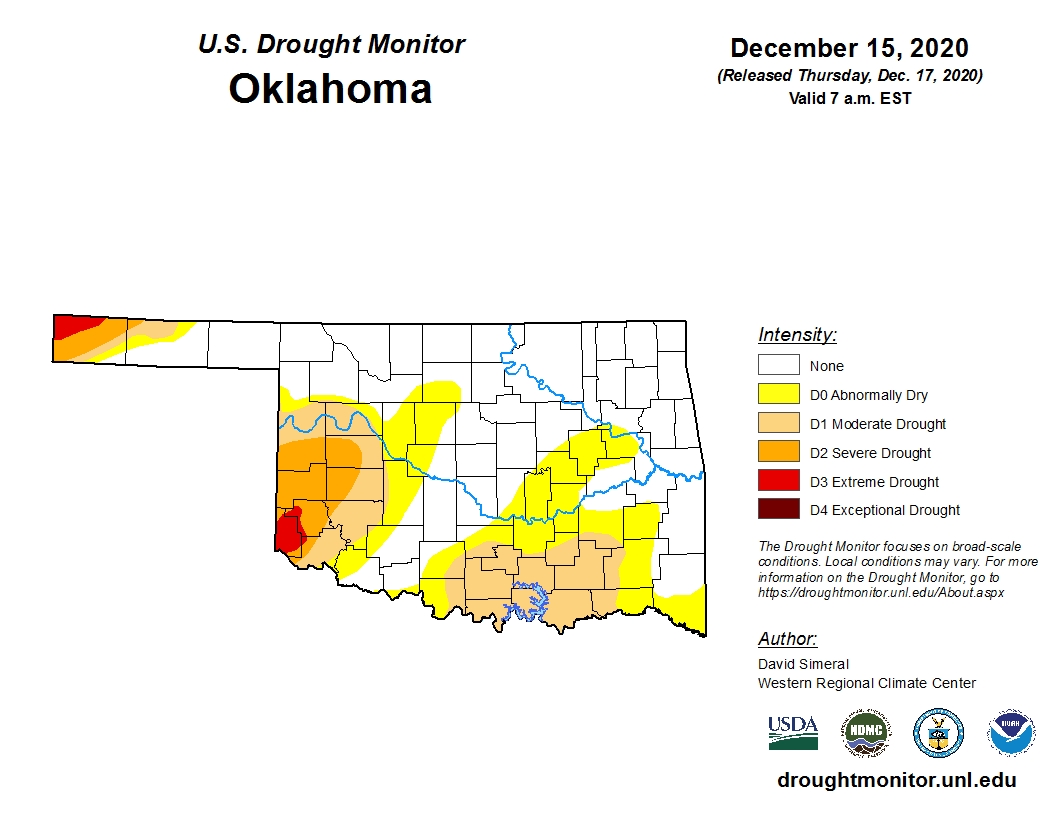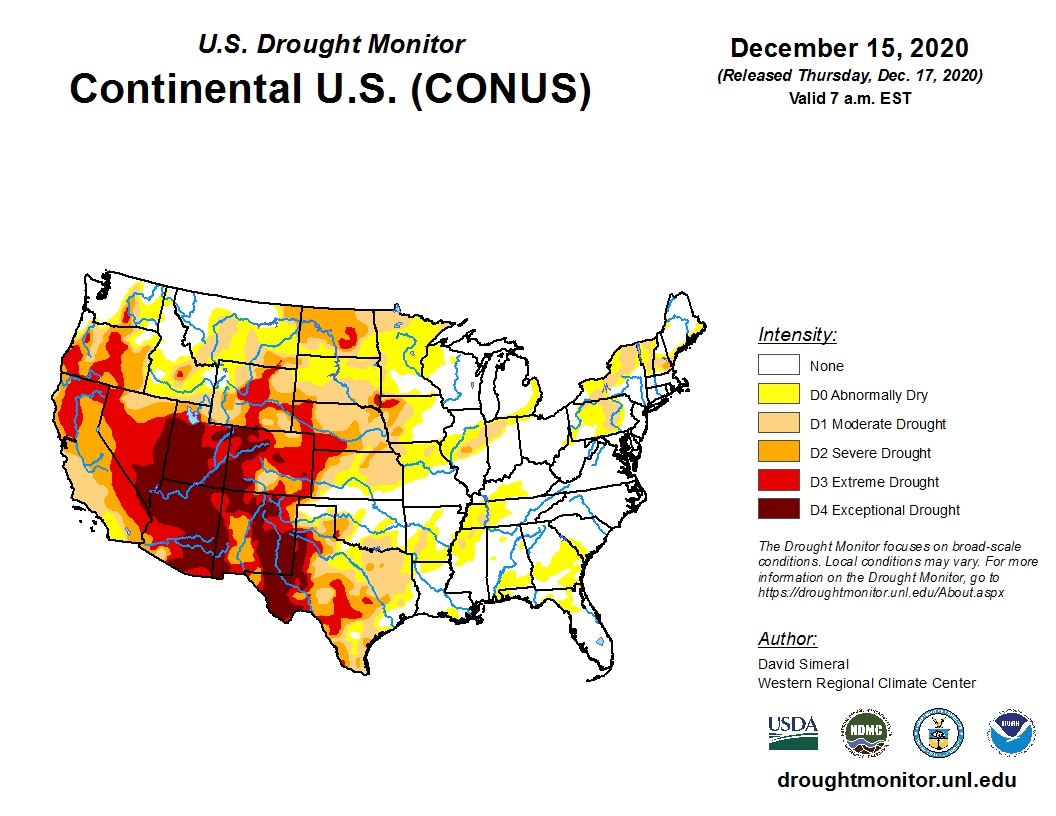
Agricultural News
Winter Storms Bring Some Drought Relief But Much of The Western And Southwestern Regions Are Still Suffering
Thu, 17 Dec 2020 16:38:34 CST
 Improvement is the key word in this week's U.S. Drought Monitor map update as winter storms raked the country, adding much needed moisture to the southwest, southern Great Plains and lower Midwest.
Improvement is the key word in this week's U.S. Drought Monitor map update as winter storms raked the country, adding much needed moisture to the southwest, southern Great Plains and lower Midwest.
The winter wheat crop desperately needs some help and many fields in the central and southern High Plains received ample amounts of heavy, wet snow.
We did see some drought intensification in the south Texas Plains and Hill Country where warm, dry conditions persisted. In these regions 90-day precipitation deficits have ranged from 2 to 8 inches.
Conditions improved in the Texas and Oklahoma Panhandle regions due to the winter storm events.
Southwest Kansas and northeast Wyoming also benefited from the winter storms.
However, much more precipitation is needed as major areas of the southwest and western U.S. are covered in shades of drought and an estimated 83.8 million people are currently living with drought conditions.
To view the U.S. Drought map, click here.
For Oklahoma, the snowstorms reduced drought coverage from 56.95 percent last week to just 45.78 percent this week.
Two areas of concern continue to color the map: Cimarron County in the Panhandle and Harmon County in the southwest corner of the state which both show shades of red for extreme drought (D3).
The 15 to 16 inches of snow that fell in Cimarron County did not seem to put much of a dent in the D3 designation.
To view the Oklahoma drought map, click here.
To view the monthly drought outlook map for December from the Climate Prediction Center, click here.
The outlook for Christmas appears to be warm and dry for much of Oklahoma.
To view the 6-10-day temperature outlook, click here.
To view the 6-10-day precipitation outlook, click here.
The U.S. Drought Monitor Map is developed through a partnership between the National Drought Mitigation Center at the University of Nebraska-Lincoln, the United States Department of Agriculture, and the National Oceanic and Atmospheric Administration.

WebReadyTM Powered by WireReady® NSI
Top Agricultural News
More Headlines...





